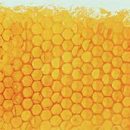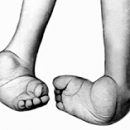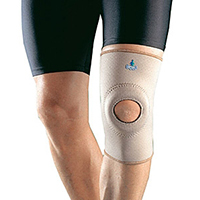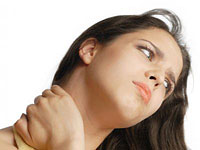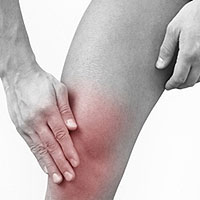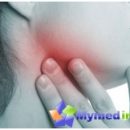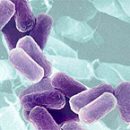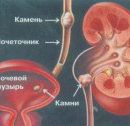What is the most common cause of pain in the bottom of the back? Osteoarthritis - a multifactorial disease that develops slowly, but in the absence of treatment, leading to a sharp restriction of human physical activity.
Content
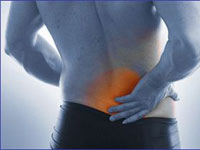 The progressive chronic degenerative-dystrophic disease of the lumbosacral intervertebral joints is called differently: osteochondrosis, spondyltrosis and osteoarthritis of the lumbar spine. This disease is very widespread and is the most common cause of pain in the lower back of the back, in the absence of treatment sharply restructing the physical activity of the person and reduce its working capacity. Know the causes of the ailment and its first manifestations — it means to prevent its development in time and avoid complications.
The progressive chronic degenerative-dystrophic disease of the lumbosacral intervertebral joints is called differently: osteochondrosis, spondyltrosis and osteoarthritis of the lumbar spine. This disease is very widespread and is the most common cause of pain in the lower back of the back, in the absence of treatment sharply restructing the physical activity of the person and reduce its working capacity. Know the causes of the ailment and its first manifestations — it means to prevent its development in time and avoid complications.
Why and who has osteoarthrosis of the spine?
From the point of view of medicine osteoarthritisosis — Multifactoric disease, developing as a result of a combination of external and internal reasons.
To internal reasons include
- Age, since the disease is more common in the elderly.
- Floor — Female representatives spondyloarthrosis is revealed with a greater frequency.
- Congenital Spinal Development Anomalies.
- Genetic predisposition to osteoarthritis Medicine considers as a factor determining the features of exchange disorders affecting metabolism in cartilage tissue.
External factors predisposing to the development of the disease — Osteoarthrosis of the lumbar spine
- Back injuries and spine.
- Excessive joints on joints, accompanied by microtrams of joints during sports.
- Insufficiently developed muscular spinal frame.
- Violations of posture.
- Excess body weight.
- Professional activities related to lifting weights, long stay in a forced pose.
Development of osteoarthrosis of the spine
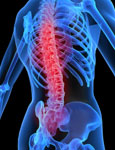 How it sees medicine, osteoarthritis, and in particular the lumbar spine, begins with a violation of metabolic processes in the core of the intervertebral disk. The cartilage tissue loses moisture and volume, loses its elasticity and ceases to perform depreciation functions. Experiencing increased load, articular surfaces of the vertebrae hypertrophy, the growing bone fabric forms osteophytes. The distance between the elements of the spine progressively decreases, the movement is limited in it, the voltage of the ligaments and muscles increases, providing biomechanics of the spinal column, which leads to their atrophy and further increases the burden on the joints.
How it sees medicine, osteoarthritis, and in particular the lumbar spine, begins with a violation of metabolic processes in the core of the intervertebral disk. The cartilage tissue loses moisture and volume, loses its elasticity and ceases to perform depreciation functions. Experiencing increased load, articular surfaces of the vertebrae hypertrophy, the growing bone fabric forms osteophytes. The distance between the elements of the spine progressively decreases, the movement is limited in it, the voltage of the ligaments and muscles increases, providing biomechanics of the spinal column, which leads to their atrophy and further increases the burden on the joints.
Excessive loads lead to the destruction of the intervertebral disc, protrusion and intervertebral hernias, leading to neurological disorders. Damage to chondrocytes is accompanied by the release of inflammation mediators and the development of arthritis supporting the disease — Osteoarthrosis.
Recognize the disease: how the lumbar osteoarthritis is manifested?
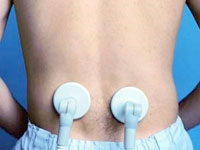 The main symptom of the disease is back pain, and it is diverse and occurs in various situations. At first it appears only with a significant physical activity, after a long seating in an uncomfortable posture and passes after a short warm-up. Then, as osteoarthrosis progressing, the pain is enhanced and worried at the slightest movement and even alone.
The main symptom of the disease is back pain, and it is diverse and occurs in various situations. At first it appears only with a significant physical activity, after a long seating in an uncomfortable posture and passes after a short warm-up. Then, as osteoarthrosis progressing, the pain is enhanced and worried at the slightest movement and even alone.
Pain with spondyloarthritis caused by various reasons
- Mechanical pain is caused by movement, occurs when the joint is loaded and passes after rest.
- The pain of an inflammatory nature is constant and accompanies the phenomena of arthritis and periatritis.
- Start pain occurs at the beginning of the movements after a long rest, disappears after a small warm-up.
- «Blocade» Pain intense, sharp, appear suddenly with a sharp movement, forcing the patient to stick in a forced pose.
The movement of the spine is limited in volume, accompanied by a crunch. It is noted the morning stiffness of the lower back, passing 1-2 hours after the start of movements. Further development of the osteoarthrosis of the spine leads to the destruction of the intervertebral disk, the emergence of complications accompanied by the infringement of nerve fibers derived from the spinal cord. The final stage of the development of the disease becomes complete immobilization of the joint.

